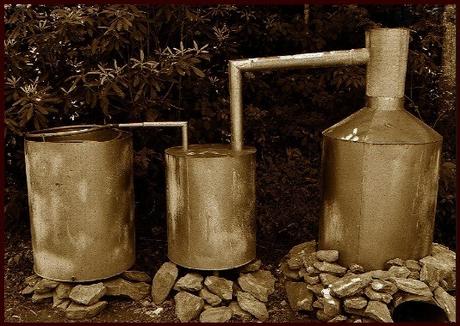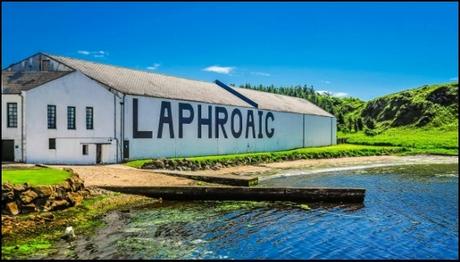Whose alcohol consumption has been higher in 2020 than in previous years? Let's have a show of empties. Hold them up. It's as I thought, and I'm no exception. Hard times call for hard liquor - in moderation of course (we've got to love our livers). It's a help to get us through the pain of a pandemic, and way better than drinking bleach!
Distilling being the weekly theme, I'm having a shot at extracting the essence of moonshine. Let's start with the etymology. Historically, it refers to clear, unaged whisky, made from barley in Scotland and Ireland and from corn in the USA. The term moonshine whisky, meaning not the proper thing, and indeed the practice of illicit whisky production, both originated in the British Isles as a reaction against the excise laws. The first recorded reference of the usage is to be found in the 1785 edition of 'Grose's Dictionary of the Vulgar Tongue', though it was in Prohibition era America that the term became widespread.
Whisk(e)y-making has for long been a fringe activity, Celtic fringe in the case of the British Isles, and it is thought that nearly all of the currently reputable centres of whisky production in both Ireland and Scotland began centuries ago as out-of-the-way illegal stills. Taking Islay as an example: "Its past is pervaded by innumerable tales of home distilling, smuggling and illegal whisky production...and most of its original distilleries started as farm distilleries and retreated to secluded glens and caves in the 17th century when the excise man came calling."

moonshine machinery
Distillation (originating in ancient Greece, don't you know?) is the fourth step of a process by which grain (in the case of whisky) is malted, then mashed, then fermented to produce alcohol. This fourth step, distillation of the alcohol by heating in a still to extract and then condense the purified vapour, may be repeated (twice or even three times) for increasing levels of purification. What comes out at the end is generally around 40% proof whisky or 'water of life', from the Gaelic uisge beatha.We can do better than moonshine nowadays and various regions of Scotland including the Hebridean islands have become world-renowned for their whiskies, with Islay alone, as previously mentioned, boasting ten distilleries, dotted around its shoreline for ease of importation of barley and export of whisky by boat. On the south side of the island, the malted barley is roasted over peat to give a distinctive smoky flavour, and here can be found my favourite, Laphroaig, but the slow-aged single malts are all superb and preference is a matter of taste (and pocket).

the Laphroaig distillery on Islay
Islay FireThe Queen of the Hebridesbleeds liquid amber, salvefor the sorrows of the world.
With smoke in the water,notes of seaweed and iodine,if she tastes like medicine
that's because this fiery nectardrips succour into faint souls.Slàinte mhath!
And may the beam of the glassnever destroy the ray of the mind.
Thanks for reading. To your very good health, S ;-) Email ThisBlogThis!Share to TwitterShare to Facebook
